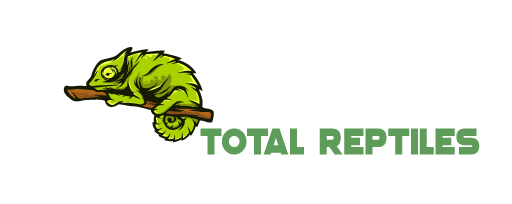Have you ever wondered why your bearded dragon sticks its arms in the air and waves? Or what does it mean when it puffs out its neck beard until it’s jet black? Aggressive males have even been known to attack females who do not display submissive gestures in return. Our scaly reptile friends use a variety of body language to communicate. The key is learning how to interpret their unique language.
Understanding your bearded dragon’s behavior is crucial for providing proper care. Their actions give insight into their health, mood, and well-being. You’ll be better equipped to meet their needs when you can interpret their signals.
I’ll walk you through bearded dragons’ key behaviors and body language in this guide. You’ll gain insight into what your beardie is trying to communicate through actions like arm waving, glass surfing, and even changing colors!
With some knowledge and attention, you can build an even better bond with your reptile friend.
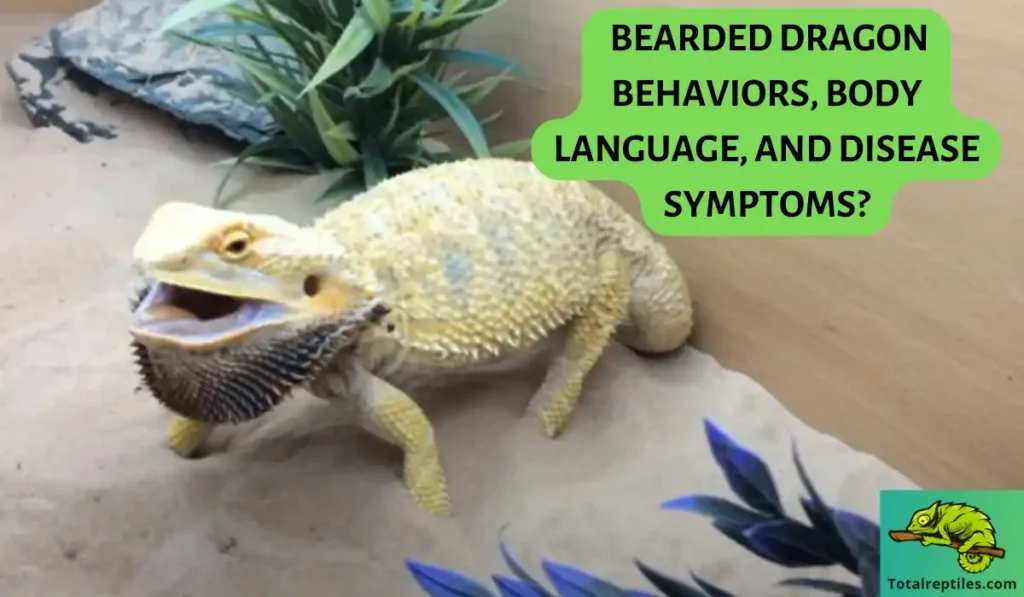
Bearded Dragon Body Language
Bearded dragons establish territories in which displays of aggression and appeasement form a normal part of their social interactions. Understanding these social signals will help you interpret your beardie’s needs and moods. Let’s break down most bearded dragon communication methods:
Waving
Bearded dragons display a hand-waving gesture to show submission (most often when acknowledging another bearded dragon’s territory) and a head-bobbing display to show dominance between dragons:
- Species recognition – It’s a way for beardies to acknowledge and identify each other. If your dragon is waving at you, it’s their way of saying, “I see you!”
Head Bobbing
Head bobbing is when your bearded dragon quickly bobs its head up and down. This is a common dominance display.
Males will head bob to show off for potential mates. Changes in the pace of head bobbing are a form of communication. Males head bob to impress females, and a male often has to demonstrate his dominance when attempting to mate before the female will concede.
Head bobbing also establishes rank between dragons. A dominant dragon head bobbing quickly is showing aggression. The subordinate dragon may respond with slow head bobs to signal they submit.
So, in general:
- Fast head bobs = higher ranked, displaying dominance
- Slow head bobs = lower ranked, acting submissive
Arm Waving
Arm waving and head bobbing often go hand-in-hand (or arm-in-head?). Bearded dragons waving is how a subordinate dragon acknowledges the dominant one’s head bobbing.
This little waving dance is a dragon’s way of peacefully working out their social hierarchy. An arm-waving dragon is communicating, “I submit to your dominance.”
Digging
You may catch your beardie digging and scratching at the tank floor. In the wild, digging allows dragons to burrow and find shelter. But for pet beardies, it usually means:
- Nesting – A female ready to lay eggs will dig to prepare a nest.
- Temp regulation – Too hot or cold? Digging allows them to burrow down to their preferred temperature.
- Brumation prep – Digging creates the perfect sleepy cold-weather cave.
So, moderate digging is normal. Just watch for excessive digging, which could signal stress or discomfort.
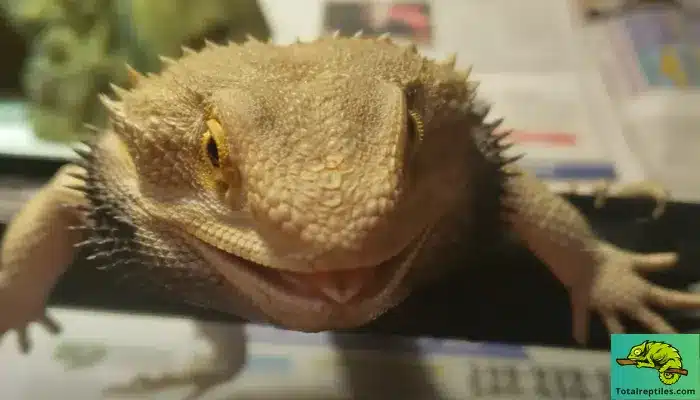
Lying on Top of Each Other
You may find one lying on top of another if you have multiple beardies. This seems cute, but it’s a show of dominance as dragons compete for prime sunbathing real estate.
The bearded dragon hierarchy runs strong, so the dominant dragon will climb on top of a subordinate one to reinforce their rank and access more UV light. Separate any dragons practicing this bullying behavior.
Mouth Gaping
Catch your bearded dragon sitting with its mouth wide open. This frequent behavior allows them to regulate their temperature.
Since beardies can’t sweat, gaping releases heat and prevent overheating. It’s equivalent to a dog panting! You’ll see the most gaping during hot basking sessions under the heat lamp.
Yawning
Just like us humans, bearded dragons yawn, too. A yawn is a quick beard puff followed by opening and closing the mouth. It’s most common in the morning or when waking from a nap.
Experts aren’t sure why reptiles yawn. But it seems to be a way for them to stretch out and prepare for an active day after a long snooze. Normal dragon behavior!
Basking
Basking under a heat lamp or direct sun is crucial for bearded dragons. The warmth and UV radiation helps them properly digest food, produce vitamin D3, and regulate body temperature. You’ll know your dragon is basking when it flattens and turns darker to absorb as much heat and light as possible. A happy basking dragon is a healthy dragon!
The bearded dragon has also been shown to perceive illusion, specifically the Delboeuf illusion. Bearded dragons noticed the deception and chose the smaller plate more often than the larger one, indicating that a larger plate does not automatically indicate more food.
Enrichment and Bonding Through Understanding Body Language
Paying attention to bearded dragon’s unique signals and behaviors allows you to enrich their life. Understanding their communication creates a stronger bond and helps you meet their needs.
Enrichment Opportunities
Observing natural behaviors like digging, climbing, and hunting presents enrichment opportunities. Provide activities and tank additions to satisfy these instinctual urges:
- Add climbable branches and hammocks
- Incorporate suitable loose substrate for digging
- Use foraging feeders to stimulate hunting drives
Rotating new textures and scents into their environment keeps life exciting, too.
Responding to Signals
When you comprehend your dragon’s body language, you can better respond to their state of mind:
- Glass surfing? Assess for stressors.
- Twitching tail? Check for fright triggers.
- Head bobbing? Must be feeling flirty!
Meeting needs signaled through behaviors improves welfare.
Positive Reinforcement
Reward desired behaviors like cooperating with handling or medications. Give treats after vet visits, baths, or claw trims associated with stress.
You can even train dragons with targets and clickers! Reinforcing good behavior enhances your bond.
Handling Techniques
Approach slowly from the front versus above to avoid biting. Support full body and limbs to prevent squirming scratches.
Pay attention to stress signals like hissing or black beard – stop and give your dragon space if needed. Respect signals to make handling safe and positive.
Bearded Dragon Signs of Aggression
While bearded dragons are usually pretty chill, they have a few defensive maneuvers when feeling threatened. Adult bearded dragons are territorial. As they grow, they establish territories that display aggression. Here are some behaviors that signal aggression or fear:
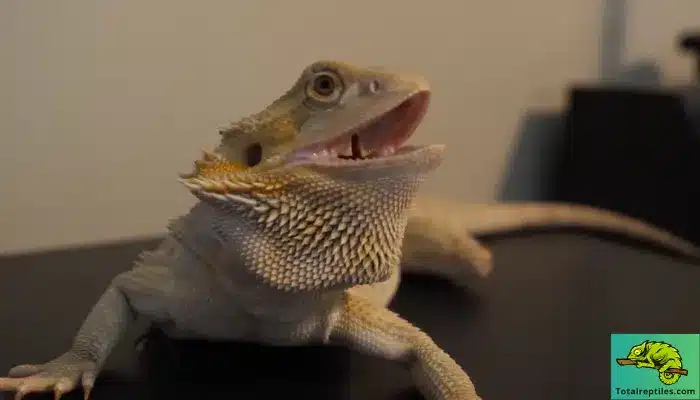
Hissing
Extreme behavior such as hissing can be observed when threatened by a predator, inflating the body and tilting towards the threat in defense. The hiss serves as a warning to back off.
Some common reasons for hissing:
- Being picked up incorrectly
- Loud noises or fast movements
- Unfamiliar people or pets getting too close
Hissing should stop once the beardie feels safe and secure again. However, consistent hissing may signal an underlying issue causing chronic stress.
Stamping
Along with hissing, an agitated dragon may start stamping its feet.
But oddly enough, males also use foot stamping to attract females during mating season. So pay attention to related behaviors to decipher whether your dragon is irritated or feeling amorous!
Beard Puffing
When threatened, dragons will instantly puff out their beards to appear larger and more intimidating. It’s a defensive maneuver meant to scare off predators and competitors.
The beard also darkens to amplify the effect. Too much beard puffing may indicate chronic stress or fear.
Going Black
The beard darkens, sometimes turning jet black, and inflates during the display. This and a beard puff make them seem fierce and dangerous.
A black beard or body typically means your dragon is frightened, stressed, or territorial. But it can also signal illness, so watch for any accompanying symptoms.
Biting
A bite is an obvious sign of aggression. Beardies will snap if provoked or mishandled. Since they don’t have great vision, sudden movements can trigger bites. Adult male bearded dragons can bite more forcefully than adult females, which is associated with greater head dimensions.
Pancaking
“Pancaking” is when a dragon flattens its body against the ground in fear. This reaction helps beardies freeze and camouflage to avoid predators noticing them.
Pancaking in response to specific triggers, like a loud noise, is normal. But bearded dragon pancaking may mean your dragon feels unsafe in their home environment.
Tail Curling
While bearded dragon tail wagging often signals happiness during playtime, it can also convey fear or stress. You may notice curling paired with dark black skin when your dragon is truly distressed.
So, pay attention to any related behaviors to understand the emotion behind the tail curl at that moment.
The key is observing what triggers these signals and minimizing what causes your beardie stress. With time, you can create an environment where aggressive displays are rare and your dragon feels secure.
Preventing and Identifying Sources of Stress
Bearded dragons exhibit signals when they feel stressed or unsafe. As a caring owner, you can prevent stressed bearded dragons and create a relaxing environment.
Common Stressors
Stress often stems from housing issues like:
- Incorrect temperatures or lighting
- Tank too small -Sparse furnishings -Dirty environment -A loud or chaotic home
Improper diet, lack of exercise, and health issues also induce stress. Identify and fix any husbandry shortcomings.
Reducing Environmental Stress
To minimize anxiety:
- Maintain ideal heat gradients.
- Provide UVB overhead, not through the sides.
- Use correct wattage bulbs for tank size.
- Give 24/7 access to hiding spots.
- Keep enclosures clean and hygienic.
Also, incorporate enrichment tools like vines, tunnels, and scratch pads.
Acclimating Shy Dragons
For scared dragons:
- Approach slowly and calmly
- Begin handling gently in short sessions
- Offer treats during handling
- Avoid sudden loud noises and movements
Patience and care condition shy beardies to feel safe and relaxed.
Consulting a Vet
Unexplained chronic stress warrants a full checkup to pinpoint underlying illness. Vet visits also reduce stress once medical issues are treated.
A stress-free life lets your bearded dragon’s true, vibrant personality shine through!
Bearded Dragon Abnormal Behaviour
Bearded dragons have some go-to behaviors that signal they’re stressed or uncomfortable. Identifying and addressing stressors will help keep your dragon happy and healthy.
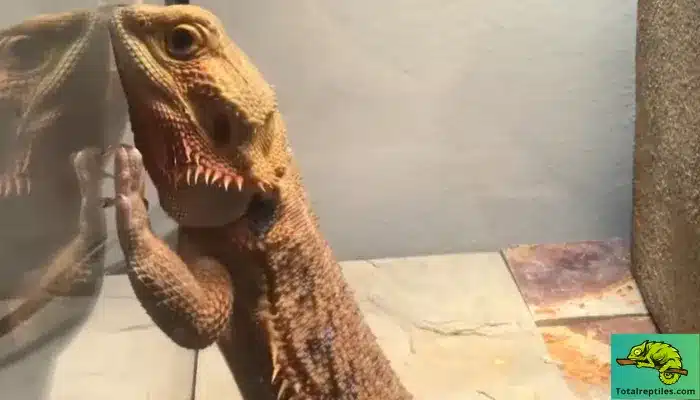
Glass Surfing
Ever notice your beardie frantically scratching the tank walls like it’s trying to escape? This “glass surfing” screams stress. Causes can include:
- Small tank size
- Tank too crowded
- Improper temperatures
- Loud noises
- New pet in the home
If you spot glass surfing, scan the environment for stressors. More space, proper lighting, and a calm setting work wonders.
Hiding
A bearded dragon looking for a hiding place is likely anxious or overwhelmed. Providing a hide box or cave allows a safe retreat to lower stress.
But sudden increased hiding may also mean your dragon is sick. Watch for any accompanying symptoms. Vet visits relieve stress, too, when illness is the cause.
Twitching/Jerking
Unexpected twitching or jerking movements suggest something is frightening your dragon. Figure out what environmental factor is causing this neurological stress response.
Wobbly Walking
Lack of stability while walking usually signals high-stress levels or an underlying health problem. Wobbly walking accompanied by lethargy requires an immediate vet visit to diagnose the cause.
Lethargy
A lethargic bearded dragon around more than normal is likely stressed, depressed, or sick. Lethargy paired with the puffed beard and dark colors screams stress.
Evaluate husbandry and tank conditions to pinpoint and eliminate the stressor. Increased handling and exercise also help counteract lethargy.
Stargazing
If your dragon stares up with its mouth open for no reason, it indicates severe neurological stress. This unusual behavior warrants a vet visit to determine if illness is the cause.
Over-Soaking
While some bath time is healthy, a dragon suddenly soaking for hours signals their environment is too hot or dry. Adjust the tank temperature and mist more often to help your dragon feel comfortable.
Modifying husbandry and habitat is the solution when acute or chronic stress is the cause. With attentive care, your bearded dragon will reward you with their cheerful, lively self!
Life Stage Signals
A bearded dragon’s behavior changes across life stages as they mature and reach old age. Here are some key signals during special life events:
Brumation
Brumation is the reptile version of hibernation. As seasons and temperatures change, your beardie may start:
- Hiding more
- Sleeping often
- Refusing food
- Slow reactions
These signals mean brumation is imminent. Support the process by:
- Gradually dropping temperatures/lighting.
- Providing a safe shelter
- Monitoring weight and hydration
Never force or prevent brumation without vet approval. Allow it to occur naturally based on your dragon’s cues.
Shedding
Shedding skin is a lifelong process for beardies. Before a shed, you’ll notice:
- Duller skin colors
- Discomfort/hiding
- Lack of appetite
- Eye bulging
Puffy eyes help loosen eyelid skin. Frequent soaks, increased hydration, and a humid hide help ease the process. Avoid pulling the skin off your dragon, as it can damage scales.
Female bearded dragon behavior
When a female is ready to lay her eggs, she’ll show some telltale signs:
- Decreased appetite
- Lethargy
- Excessive basking
- Digging/scratching
- Glass surfing
Provide a suitable nesting box with 1+ feet of substrate for digging. Female bearded dragons have been seen lowering themselves towards the ground and intermittently arm waving while moving away from a dominant male to appease or escape.
Old Age
Senior beardies exhibit slowed behavior, including:
- Lethargy/stillness
- Loss of appetite
- Shallow/strained breathing
- Disinterest in stimuli
Support elderly dragons by assisting with basic needs like feeding, warming, and bathing. Vet checkups identify age-related conditions needing treatment for a good quality of life. Use their behavioral cues as a guide to provide tailored support.
Symptoms of Illness
While bearded dragons are fairly hardy reptiles, they are susceptible to certain illnesses if husbandry is improper. Here are signals that may indicate a health problem:
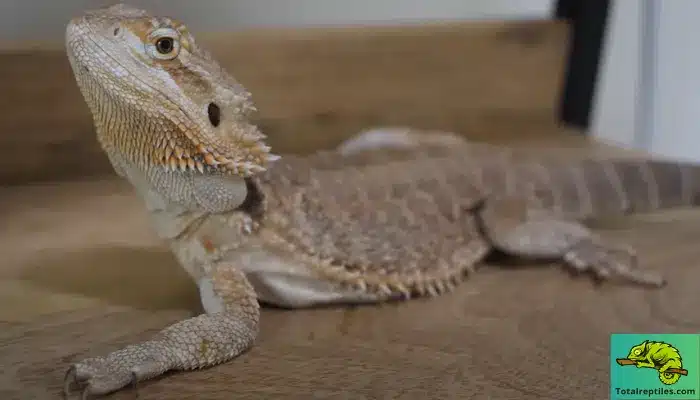
Respiratory Infections
Symptoms include:
- mouth breathing
- Gaping
- Mucus around nose/mouth
- Labored breathing
Causes are usually stagnant temperatures, high humidity, or unsanitary housing. Vet care with antifungal/antibiotic medication is required. Prevent issues by maintaining proper heat and hygiene.
Metabolic Bone Disease
Signs of MBD include:
- Weak limbs/twitching
- Bent legs/back
- Stunted growth
- Bone deformities
MBD stems from an imbalance of calcium, low D3, excess phosphorus, or poor UVB exposure. Vets can diagnose and prescribe supplements and lighting adjustments. Prevention centers on proper diet and lighting from a young age.
Mouth Infections
Look for:
- Cheesy deposits in the mouth
- Swollen lips/face
- Loss of appetite
- Difficulty breathing
Mouth rot and other oral infections require prescription antibiotic treatment. Boosting temperatures, sanitation, and nutrition help avoid issues. Seek help immediately at any signs of mouth trouble.
Eye Infections
You may notice:
- Swelling around eyes
- Squinting
- Discharge/reddened eyes
- Keeping eyes shut
Infections can occur from poor nutrition, low hygiene, or trauma. Vet care combining antibiotics and pain relief resolves most cases. Keep enclosure surfaces smooth to prevent eye scratches and damage.
Parasites
Symptoms of parasites include:
- Weight loss
- No appetite
- Diarrhea
- Vomiting
- Slow movements
Endoparasites (internal) and ectoparasites (external) require prescription medication to eliminate—boost tank hygiene to prevent re-infestation. Schedule periodic fecal tests to catch parasites before symptoms escalate.
Impaction
Signals of impaction are:
- Lack of bowel movements
- Swollen stomach
- Lethargy
- Vomiting
Blocked digestion from the substrate or oversized feeders requires immediate vet assistance. Always monitor your dragon’s behavior so any aberrations can be addressed ASAP by a qualified exotic veterinarian.
Conclusion
And there you have it – a guide to understanding your bearded dragon’s unique behaviors and signals! You should now feel equipped to interpret their wide range of communication methods. You can appreciate the meaning behind your dragon’s actions, whether waving hello or head bobbing for dominance. Most importantly, you’re prepared to identify signs of illness and distress.
Catching problems early makes all the difference in treatment and recovery. Caring for a bearded dragon is incredibly rewarding but does require attentiveness and education. Their behaviors provide a window into their health and state of mind. So observe your scaly friend closely, provide the best possible habitat and nutrition, and respond promptly to any concerning symptoms. Do this, and you and your beardie will enjoy a long and happy life together!
Thanks for taking the time to understand the signals of these amazing reptiles. Now, put your skills to work and give your bearded dragon the outstanding care it deserves!
